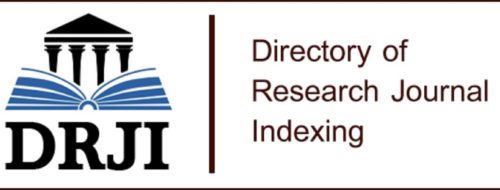Öz
Bu araştırmada yiyecek içecek servis personelinin işgücü sürdürülebilirliğinin sağlanması amacıyla
yiyecek içecek işletmelerinin gerçekleştirdiği faaliyetlerin tespit edilmesi ve yiyecek içecek servis
personeli mesleğinin mevcut durumunun ortaya koyulması amaçlanmaktadır. Nitel araştırma
yönteminin kullanıldığı bu araştırmada yarı yapılandırılmış mülakat formu hazırlanarak Sakarya ilinde
faaliyet gösteren yiyecek içecek işletmeleriyle görüşmeler gerçekleştirilmiştir. Elde edilen veriler
doğrultusunda yiyecek içecek sektörü içerisinde nitelikli servis personeli ihtiyacının bulunduğu,
çalışanların bu mesleği ara meslek olarak görüp maddi ihtiyaç ve kısa süreli para kazanma amacıyla
tercih ettikleri ve bu nedenle personel ve işletme arasında personelin disiplinsizliği, misafirlerle iletişim
gibi konularda sorunların yaşandığı görülmektedir. Bunun yanı sıra yiyecek içecek servis personeli
mesleğini tercih eden bireylerin yetersiz ücret ve kariyer beklentilerinin karşılanmaması noktasında
işten ayrılma davranışı gösterdikleri tespit edilmiştir. Yiyecek içecek servis personeli mesleğine olan
talebin artırılması ve nitelikli işgücünün yetiştirilmesi noktasında ise maaş, çalışma saatleri ve işletme
içi eğitimler konusunda iyileştirmeler yapılması gerektiği sonucuna ulaşılmıştır.
Anahtar Kelimeler
Yiyecek İçecek Sektörü Yiyecek İçecek Servis Personeli İşgücü Sürdürülebilirliği
Kaynakça
- Boles, J. S., Ross, L. E. ve Johnson, J. T. (1995). Reducing Employee Turnover Through The Use of Preemployment Application Demographics: An Exploratory Study. Hospitality Research Journal, 19(2), 19-30, https://doi.org/10.1177/109634809501900203.
- Buck, J. M. ve Watson, J. L. (2002). Retaining Staff Employees: The Relationship Between Human Resources Management Strategies and Organizational Commitment. Innovative Higher Education, 26(3), 175–193. Advance online publication. doi:10.1023/A:1017916922194.
- Chacraborty, T., Mishra, N., Ganguly, M. ve Chatterjee, B. (2023). Human Resource Management in a Post-Epidemic Global Environment, Roles, Strategies, and Implementations. Canada: Apple Academic Prees.
- Chew, J. ve Chan, C. C. (2008). Human Resource Practices, Organizational Commitment and Intention to Stay. International Journal of Manpower, 29, 503-522. https://doi.org/10.1108/01437720810904194.
- Clayton, M. L., Clegg Smith, K., Neff, R. A., Pollack, K. M., ve Ensminger, M. (2015). Listening to Food Workers: Factors That Impact Proper Health and Hygiene Practice in Food Service. International Journal of Occupational and Environmental Health, 21(4), 314-327.
- Cloutier, O., Felusiak, L., Hill, C. ve Pemberton-Jones, E. J. (2015). The Importance of Developing Strategies for Employee Retention. Journal of Leadership, Accountability & Ethics, 12(2), 119-129.
- Collins, A. B. (2007). Human Resources: A Hidden Advantage?. International Journal of Contemporary Hospitality Management. 19(1), 78-84, https://doi.org/10.1108/09596110710724189.
- Curtis, C. R., Upchurch, R. S. ve Severt, D. E. (2009). Employee motivation and organizational commitment: A comparison of tipped and nontipped restaurant employees. International Journal of Hospitality & Tourism Administration, 10(3), 253-269.
- Das, B. L. ve Baruah, M. (2013). Employee Retention: A Review of Literature. Journal of Business and Management, 14(2), 8-16.
- Deery, M. (2008). Talent Management, Work‐Life Balance and Retention Strategies. International Journal of Contemporary Hospitality Management, 20(7), 792-806.
- Dermody, M. B., Young, M. ve Taylor, S. L. (2004). Identifying Job Motivation Factors Of Restaurant Servers: Insight For The Development of Effective Recruitment and Retention Strategies. International journal of hospitality & tourism administration, 5(3), 1-14.
- Han, S. J., Kim, W. G. ve Kang, S. (2017). Effect of Restaurant Manager Emotional Intelligence and Support on Front-Of-House Employees’ Job Satisfaction. International Journal of Contemporary Hospitality Management.29 (11), 2807-2825. https://doi.org/10.1108/IJCHM-11-2015-0641.
- Hausknecht, J. P., Rodda, J. ve Howard, M. J. (2009). Targeted Employee Retention: Performance-Based and Job-Related Differences in Reported Reasons for Staying. Human Resource Management, 48(2), 269-288. https://doi.org/10.1002/hrm.20279.
- Hussain, T. ve Rehman, S. S. (2013). Do Human Resource Management Practices İnspire Employees’ Retention. Research Journal of Applied Sciences, Engineering and Technology, 6(19), 3625-3633.
- Irshad, M. ve Afridi, F. (2011). Factors Affecting Employees Retention: Evidence From Literature. Abasyn Journal of Social Sciences, 4(2), 307-339.
- James, L. ve Mathew, L. (2012). Employee Retention Strategies: IT Industry. SCMS Journal of Indian Management, 9(3), 79-87.
- Jerez Jerez, M. J., Melewar, T. C. ve Foroudi, P. (2021). The effect of waiters’ occupational identity on employee turnover within the context of Michelin-starred restaurants. Journal of Hospitality & Tourism Research. Advance online publication. doi: 10.1177/10963480211034903.
- Kaur, R. (2017). Employee Retention Models and Factors Affecting Employees Retention in IT Companies. International Journal of Business Administration and Management, 7(1), 161-174.
- Kim, K. ve Jogaratnam, G. (2010). Effects of Individual and Organizational Factors on Job Satisfaction and Intent to Stay in The Hotel and Restaurant Industry. Journal of Human Resources in Hospitality & Tourism, 9(3), 318-339. https://doi.org/10.1080/15332845.2010.487043.
- Kossivi, B., Xu, M. ve Kalgora, B. (2016). Study on Determining Factors of Employee Retention. Open Journal of Social Sciences, 4(05), 261-268. http://dx.doi.org/10.4236/jss.2016.45029.
- Laxman Giri, Y. (2008). Human Resource Management: Managing People at Work. Mumbai: Pragati Book Center.
- Lu, L., Lu, A. C. C., Gursoy, D. ve Neale, N. R. (2016). Work Engagement, Job Satisfaction and Turnover İntentions: A Comparison Between Supervisors and Line-Level Employees. International Journal of Contemporary Hospitality Management. 28(4), 737-761. https://doi.org/10.1108/IJCHM-07-2014-0360.
- Lynn, M. (1996). Seven Ways to Increase Servers' Tips. Cornell Hotel and Restaurant Administration Quarterly. Advance online publication. doi:10.1177/001088049603700315
- Mehta, M., Kurbetti, A. ve Dhankhar, R. (2014). Review Paper–Study on Employee Retention and Commitment. International Journal, 2(2), 33-49.
- Phillips, J. J. ve Connell, A. O. (2003). Managing Employee Retention: A Strategic Accountability Approach. Burlington: Routledge.
- Prakash, K. ve Philimis, J. (2022). Employee Retention: A Review of literature. Specialusis Ugdymas, 2(43), 2194-2204.
- Ramlall, S. (2004). A Review of Employee Motivation Theories and Their İmplications for Employee Retention Within Organizations. Journal of American academy of business, 5(1/2), 52-63.
- Sandhya, K. ve Kumar, D. P. (2011). Employee Retention by Motivation. Indian Journal of science and technology, 4(12), 1778-1782.
- Self, J. T. ve Dewald, B. (2011). Why do employees stay? A qualitative exploration of employee tenure. International Journal of Hospitality & Tourism Administration, 12(1), 60-72.
- Singh, D. (2019). A literature review on employee retention with focus on recent trends. International Journal of Scientific Research in Science and Technology, 6(1), 425-431.
- Staniec ve Kalińska-Kula (2021). Internal employer branding as a way to improve employee engagement. Problems and Perspectives in Management, 19(3), 33-45. doi:10.21511/ppm.19(3).2021.04
- Susskind, A. M. (2010). Guest service management and processes in restaurants: What we have learned in fifty years. Cornell Hospitality Quarterly, 51(4), 479-482.
- Wildes, V. J. (2007). Should I stay or should I go? Motivation to work in foodservice. Journal of Foodservice Business Research, 11(3), 286-294.
- Wildes, V. J. ve Parks, S. C. (2004). Internal service quality: Marketing strategies can help to reduce employee turnover for food servers. International journal of hospitality & tourism administration, 6(2), 1-27.
- Yamamoto, H. (2011). The relationship between employee benefit management and employee retention. The International Journal of Human Resource Management, 22(17), 3550-3564.
Öz
In this research, it is aimed to determine the activities carried out by food and beverage businesses in
order to ensure the sustainability of the workforce of the food and beverage service personnel and to
reveal the current situation of the food and beverage service personnel profession. In this research,
in which the qualitative research method was used, a semi-structured interview form was prepared
and interviews were conducted with the food and beverage businesses operating in the province of
Sakarya. According to the data obtained, it is seen that there is a need for qualified service personnel
in the food and beverage industry, the employees see this profession as an intermediate profession
and prefer it for financial needs and short-term earning. In addition, it has been determined that
individuals who prefer the profession of food and beverage service personnel show quitting behavior
at the point of insufficient wages and not meeting their career expectations. It has been concluded
that improvements should be made in terms of salary, working hours and in-house training at the
point of increasing the demand for the profession of food and beverage service personnel and
training the qualified workforce.
Anahtar Kelimeler
Food and Beverage Industry Food and Beverage Service Personnel Workforce Sustainability
Kaynakça
- Boles, J. S., Ross, L. E. ve Johnson, J. T. (1995). Reducing Employee Turnover Through The Use of Preemployment Application Demographics: An Exploratory Study. Hospitality Research Journal, 19(2), 19-30, https://doi.org/10.1177/109634809501900203.
- Buck, J. M. ve Watson, J. L. (2002). Retaining Staff Employees: The Relationship Between Human Resources Management Strategies and Organizational Commitment. Innovative Higher Education, 26(3), 175–193. Advance online publication. doi:10.1023/A:1017916922194.
- Chacraborty, T., Mishra, N., Ganguly, M. ve Chatterjee, B. (2023). Human Resource Management in a Post-Epidemic Global Environment, Roles, Strategies, and Implementations. Canada: Apple Academic Prees.
- Chew, J. ve Chan, C. C. (2008). Human Resource Practices, Organizational Commitment and Intention to Stay. International Journal of Manpower, 29, 503-522. https://doi.org/10.1108/01437720810904194.
- Clayton, M. L., Clegg Smith, K., Neff, R. A., Pollack, K. M., ve Ensminger, M. (2015). Listening to Food Workers: Factors That Impact Proper Health and Hygiene Practice in Food Service. International Journal of Occupational and Environmental Health, 21(4), 314-327.
- Cloutier, O., Felusiak, L., Hill, C. ve Pemberton-Jones, E. J. (2015). The Importance of Developing Strategies for Employee Retention. Journal of Leadership, Accountability & Ethics, 12(2), 119-129.
- Collins, A. B. (2007). Human Resources: A Hidden Advantage?. International Journal of Contemporary Hospitality Management. 19(1), 78-84, https://doi.org/10.1108/09596110710724189.
- Curtis, C. R., Upchurch, R. S. ve Severt, D. E. (2009). Employee motivation and organizational commitment: A comparison of tipped and nontipped restaurant employees. International Journal of Hospitality & Tourism Administration, 10(3), 253-269.
- Das, B. L. ve Baruah, M. (2013). Employee Retention: A Review of Literature. Journal of Business and Management, 14(2), 8-16.
- Deery, M. (2008). Talent Management, Work‐Life Balance and Retention Strategies. International Journal of Contemporary Hospitality Management, 20(7), 792-806.
- Dermody, M. B., Young, M. ve Taylor, S. L. (2004). Identifying Job Motivation Factors Of Restaurant Servers: Insight For The Development of Effective Recruitment and Retention Strategies. International journal of hospitality & tourism administration, 5(3), 1-14.
- Han, S. J., Kim, W. G. ve Kang, S. (2017). Effect of Restaurant Manager Emotional Intelligence and Support on Front-Of-House Employees’ Job Satisfaction. International Journal of Contemporary Hospitality Management.29 (11), 2807-2825. https://doi.org/10.1108/IJCHM-11-2015-0641.
- Hausknecht, J. P., Rodda, J. ve Howard, M. J. (2009). Targeted Employee Retention: Performance-Based and Job-Related Differences in Reported Reasons for Staying. Human Resource Management, 48(2), 269-288. https://doi.org/10.1002/hrm.20279.
- Hussain, T. ve Rehman, S. S. (2013). Do Human Resource Management Practices İnspire Employees’ Retention. Research Journal of Applied Sciences, Engineering and Technology, 6(19), 3625-3633.
- Irshad, M. ve Afridi, F. (2011). Factors Affecting Employees Retention: Evidence From Literature. Abasyn Journal of Social Sciences, 4(2), 307-339.
- James, L. ve Mathew, L. (2012). Employee Retention Strategies: IT Industry. SCMS Journal of Indian Management, 9(3), 79-87.
- Jerez Jerez, M. J., Melewar, T. C. ve Foroudi, P. (2021). The effect of waiters’ occupational identity on employee turnover within the context of Michelin-starred restaurants. Journal of Hospitality & Tourism Research. Advance online publication. doi: 10.1177/10963480211034903.
- Kaur, R. (2017). Employee Retention Models and Factors Affecting Employees Retention in IT Companies. International Journal of Business Administration and Management, 7(1), 161-174.
- Kim, K. ve Jogaratnam, G. (2010). Effects of Individual and Organizational Factors on Job Satisfaction and Intent to Stay in The Hotel and Restaurant Industry. Journal of Human Resources in Hospitality & Tourism, 9(3), 318-339. https://doi.org/10.1080/15332845.2010.487043.
- Kossivi, B., Xu, M. ve Kalgora, B. (2016). Study on Determining Factors of Employee Retention. Open Journal of Social Sciences, 4(05), 261-268. http://dx.doi.org/10.4236/jss.2016.45029.
- Laxman Giri, Y. (2008). Human Resource Management: Managing People at Work. Mumbai: Pragati Book Center.
- Lu, L., Lu, A. C. C., Gursoy, D. ve Neale, N. R. (2016). Work Engagement, Job Satisfaction and Turnover İntentions: A Comparison Between Supervisors and Line-Level Employees. International Journal of Contemporary Hospitality Management. 28(4), 737-761. https://doi.org/10.1108/IJCHM-07-2014-0360.
- Lynn, M. (1996). Seven Ways to Increase Servers' Tips. Cornell Hotel and Restaurant Administration Quarterly. Advance online publication. doi:10.1177/001088049603700315
- Mehta, M., Kurbetti, A. ve Dhankhar, R. (2014). Review Paper–Study on Employee Retention and Commitment. International Journal, 2(2), 33-49.
- Phillips, J. J. ve Connell, A. O. (2003). Managing Employee Retention: A Strategic Accountability Approach. Burlington: Routledge.
- Prakash, K. ve Philimis, J. (2022). Employee Retention: A Review of literature. Specialusis Ugdymas, 2(43), 2194-2204.
- Ramlall, S. (2004). A Review of Employee Motivation Theories and Their İmplications for Employee Retention Within Organizations. Journal of American academy of business, 5(1/2), 52-63.
- Sandhya, K. ve Kumar, D. P. (2011). Employee Retention by Motivation. Indian Journal of science and technology, 4(12), 1778-1782.
- Self, J. T. ve Dewald, B. (2011). Why do employees stay? A qualitative exploration of employee tenure. International Journal of Hospitality & Tourism Administration, 12(1), 60-72.
- Singh, D. (2019). A literature review on employee retention with focus on recent trends. International Journal of Scientific Research in Science and Technology, 6(1), 425-431.
- Staniec ve Kalińska-Kula (2021). Internal employer branding as a way to improve employee engagement. Problems and Perspectives in Management, 19(3), 33-45. doi:10.21511/ppm.19(3).2021.04
- Susskind, A. M. (2010). Guest service management and processes in restaurants: What we have learned in fifty years. Cornell Hospitality Quarterly, 51(4), 479-482.
- Wildes, V. J. (2007). Should I stay or should I go? Motivation to work in foodservice. Journal of Foodservice Business Research, 11(3), 286-294.
- Wildes, V. J. ve Parks, S. C. (2004). Internal service quality: Marketing strategies can help to reduce employee turnover for food servers. International journal of hospitality & tourism administration, 6(2), 1-27.
- Yamamoto, H. (2011). The relationship between employee benefit management and employee retention. The International Journal of Human Resource Management, 22(17), 3550-3564.
Ayrıntılar
| Birincil Dil | Türkçe |
|---|---|
| Konular | İnsan Kaynakları ve Endüstriyel İlişkiler (Diğer) |
| Bölüm | Makaleler |
| Yazarlar | |
| Erken Görünüm Tarihi | 30 Aralık 2023 |
| Yayımlanma Tarihi | 31 Aralık 2023 |
| Kabul Tarihi | 21 Eylül 2023 |
| Yayımlandığı Sayı | Yıl 2023 Sayı: 66 |













ERÜ İktisadi ve İdari Bilimler Fakültesi Dergisi 2021 | iibfdergi@erciyes.edu.tr
Bu eser Creative Commons Atıf-Gayri Ticari-Türetilemez 4.0 Uluslararası Lisansı ile lisanslanmıştır.



